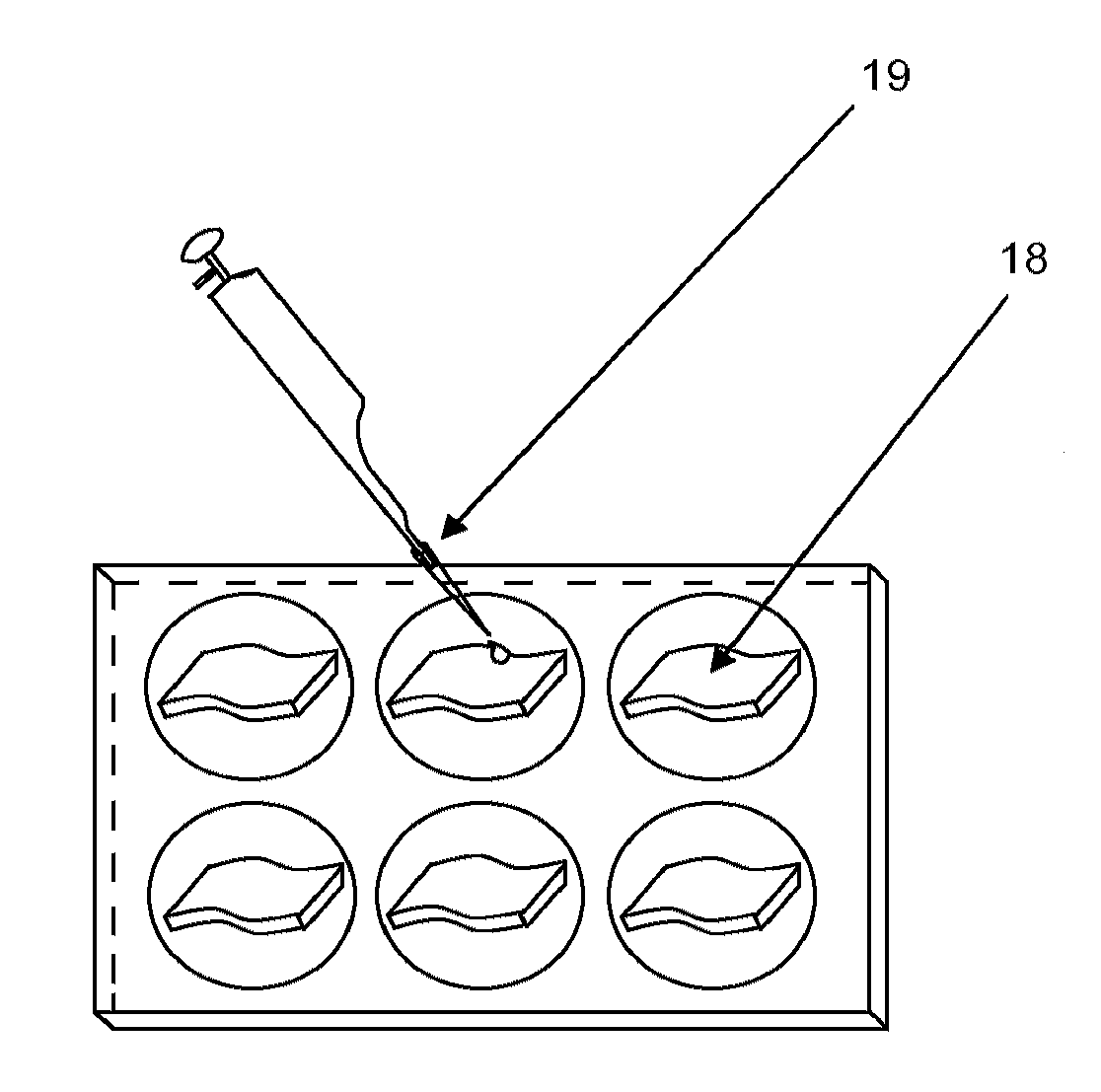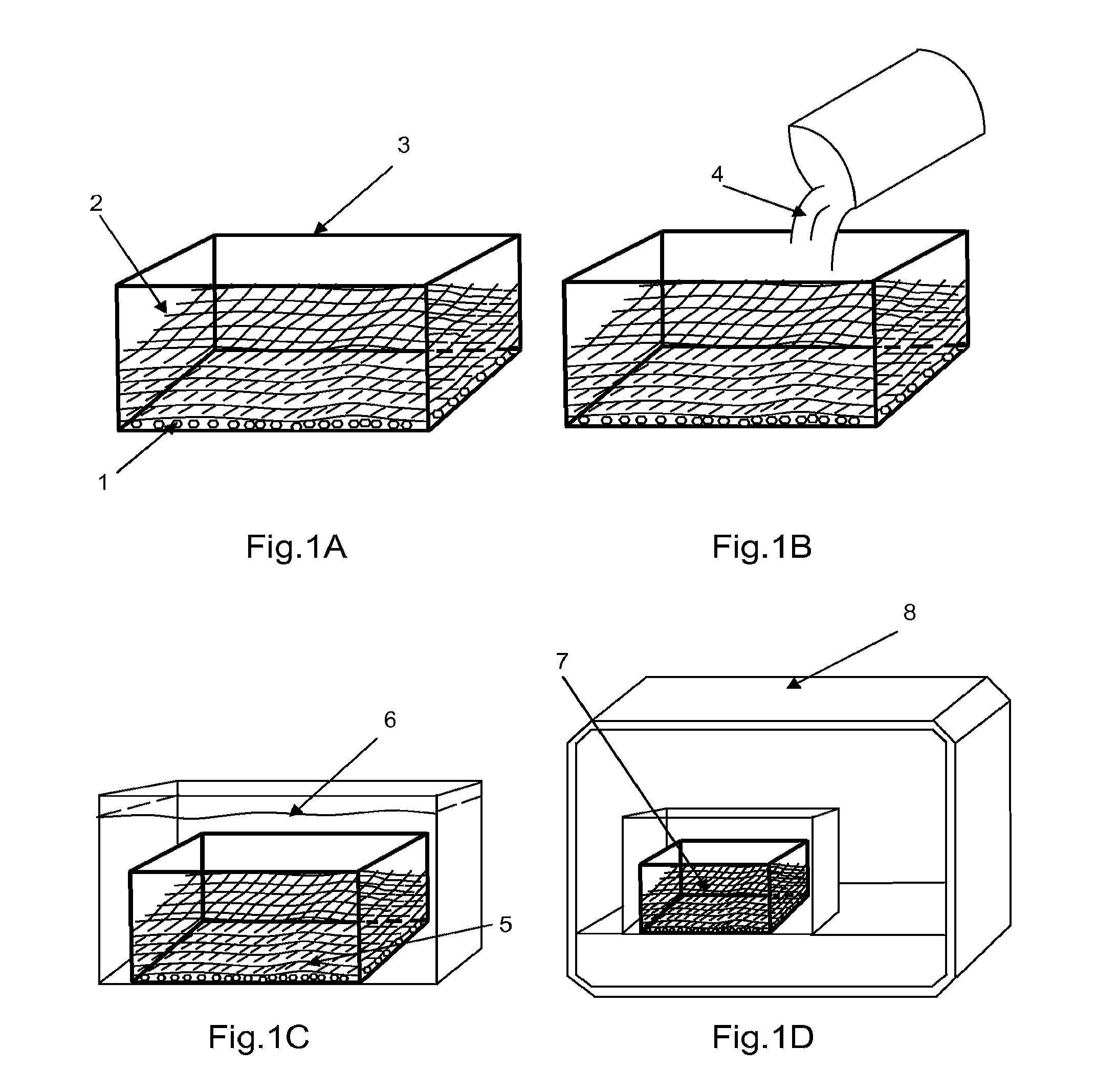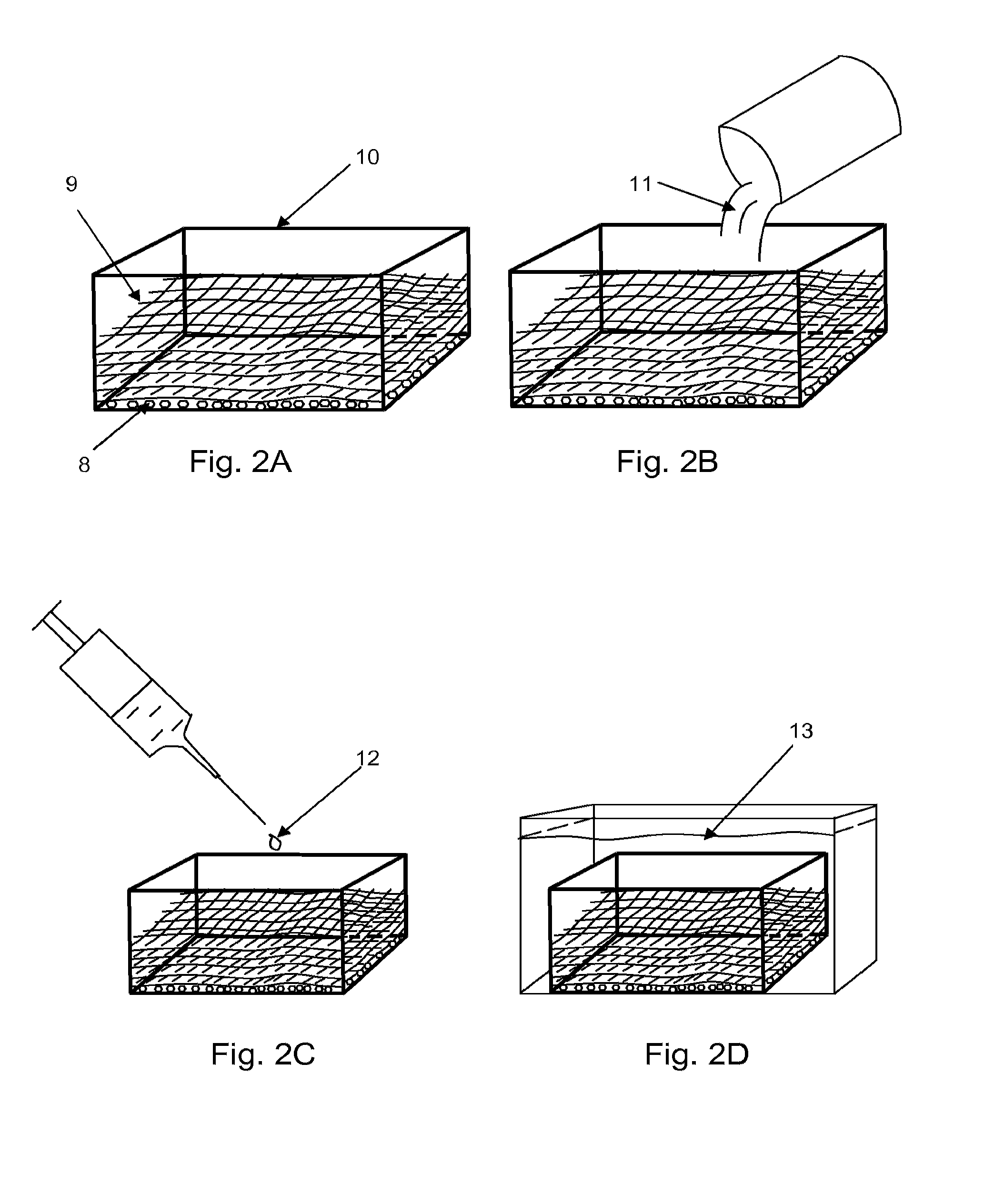Cell-guiding fibroinductive and angiogenic scaffolds for periodontal tissue engineering
- Summary
- Abstract
- Description
- Claims
- Application Information
AI Technical Summary
Benefits of technology
Problems solved by technology
Method used
Image
Examples
example 1
[0056]A. Fabrication of Cell-Guiding Fibroinductive and Angiogenic Scaffolds from Synthetic Polymers.
1) Preparation of Polymer Solutions
[0057]Two types of synthetic polymers from alpha-hydroxy ester group, poly(L-lactic acid) (PLLA) and poly(D,L-lactide-co-glycolide) (85 / 15)(PLGA85 / 15) (Sigma-Aldrich, St Louis, Mo.) were used to fabricate cell-guiding scaffolds. Both the PLLA and PLGA were dissolved in benzene or acetone (Sigma) at 60° C. in a magnetic stirrer for approximately 2 hours to obtain homogenous solutions of 5% (w / v).
2) Preparation of Porogen Replicas
[0058]Sodium chloride (NaCl) (Sigma) particles were sifted with sieves to obtain particles of two groups with sizes ranging between 100-250 μm and 250-500 μm. The sugar (sucrose, Sigma) particles were melted in a glass beaker at 120° C. A metal spatula was used to obtain fibers from the melted material as described (Zhang R, Ma X P. J Biomed Mater Res. 2000; 52:430-8). The tip of the spatula has been touched to the sugar melt...
example 2
[0073]E. Cell Proliferation and Migration Experiments with Human Periodontal Ligament Fibroblastic Cells (hPDLF) Inside the Cell-Guiding Fibrogenic and Angiogenic Scaffolds in Vitro.
1) Cell Culture and Expansion of hPDLF Cells
[0074]Human periodontal ligament fibroblastic cells were isolated and culture expanded as described (Inanc et al., Tissue Eng. 2006; 12(2): 257-66, and Inanc et al., J Biomed Mater Res A. 2007; 82(4): 917-26). Briefly, the periodontal ligament tissue from the middle third of the root of premolar teeth extracted due to orthodontic treatment needs was aseptically scraped with sterile blades and transferred to cell culture medium consisting of Dulbecco's Modified Eagles Medium (DMEM) supplemented with 15% Fetal Bovine Serum (FBS), 1% Non-Essential Amino Acid (NEAA) stock solution, 2 mM L-Glutamine, and 10× antibiotic stock solution (1000 U / ml penicillin and 500 μg / ml streptomycin) (all from Invitrogen). The periodontal ligament tissue was minced finely with the bl...
example 3
[0095]F. Periodontal Ligament Tissue Regeneration Following Implantation of Cell-Guiding Fibrogenic and Angiogenic Scaffolds into the Experimental Periodontal Defects in Dogs.
1) Formation of Experimental Periodontal Defects in Dog Premolar Teeth
[0096]Six male mongrel dogs (weighing 8-10 kg each) were used in periodontal regeneration procedures in experimental periodontitis defects using cell-guiding fibroinductive and angiogenic, osteoinductive and angiogenic, and cementoinductive fibrin scaffolds of the invention. The surgical procedures were performed under general anesthesia with intravenous injection of Pentobarbital sodium administration (25-30 mg / kg). Mucoperiosteal flaps were raised on third and fourth premolars on both sides of the mandible and alveolar bone from the buccal root surface of the third and fourth premolars was removed initially with slow-speed handpiece and carbide burr under physiologic saline irrigation, and then mechanically with bone chisels. Orthodontic li...
PUM
| Property | Measurement | Unit |
|---|---|---|
| Diameter | aaaaa | aaaaa |
| Diameter | aaaaa | aaaaa |
| Diameter | aaaaa | aaaaa |
Abstract
Description
Claims
Application Information
 Login to View More
Login to View More - R&D
- Intellectual Property
- Life Sciences
- Materials
- Tech Scout
- Unparalleled Data Quality
- Higher Quality Content
- 60% Fewer Hallucinations
Browse by: Latest US Patents, China's latest patents, Technical Efficacy Thesaurus, Application Domain, Technology Topic, Popular Technical Reports.
© 2025 PatSnap. All rights reserved.Legal|Privacy policy|Modern Slavery Act Transparency Statement|Sitemap|About US| Contact US: help@patsnap.com



